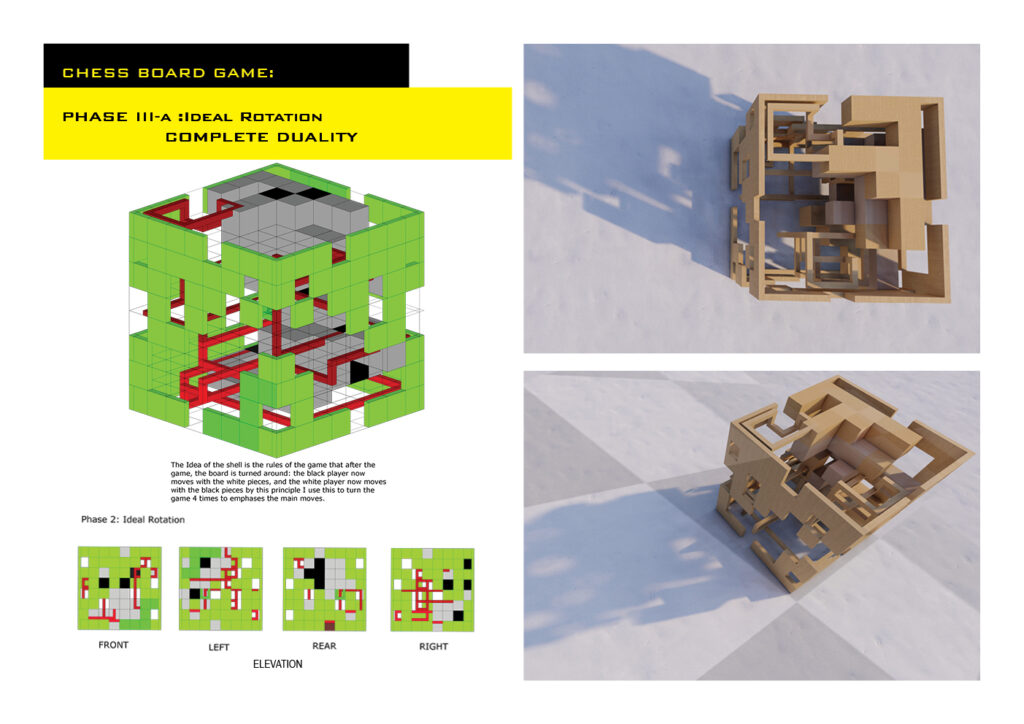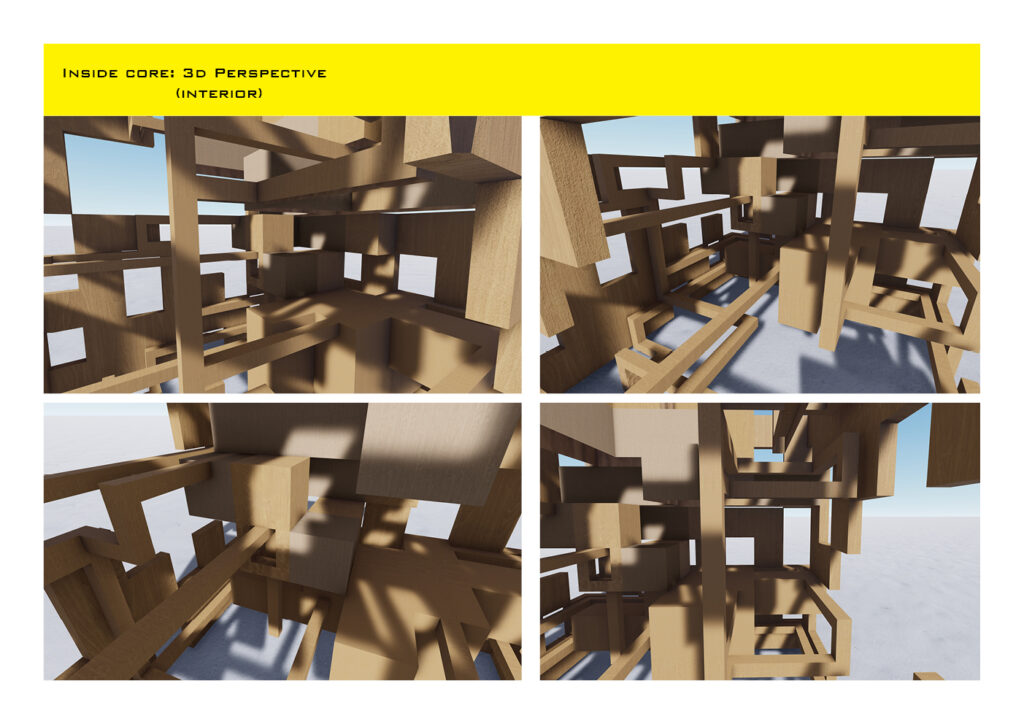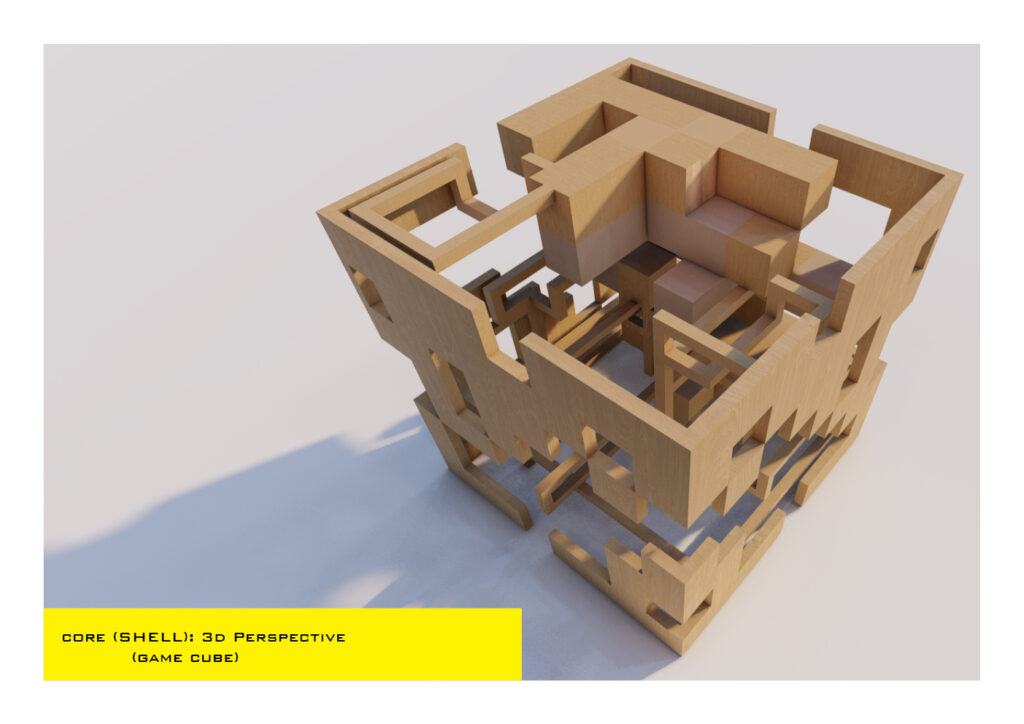
Janine Quidez
Los Angeles Institute of Architecture and Design
Professor: William Taylor
The goal of this project is to create a three-dimensional model of a partial game of chess and depict the rules governing the movement of the chess piece. Within an 8”x 8” x 8” cube field, that will develop a form language of how pieces move, as well as how they relate. In addition to being confined to the cube field, the project needs to approach one side as an open system and the other as a closed system thereby creating an inherent dialogue between the two. For this project, I utilized the moves from 43 through 50 matches played by Amos bBurn and Alexander Alekhie.
Duality Project: French Defense
Duality is a quality or state of having two different or opposite parts of an element. This helps to see both sides of the story and creates complements from the contraction of each side. Using this concept, I will relate this to Architecture to find and utilize a way of seeing and organizing things that involve the non-visual aspect of design. The order is not a thing that we see but rather a set of rules. Which, underlie and organize objects that have a physical form, even if they are drawing of object.
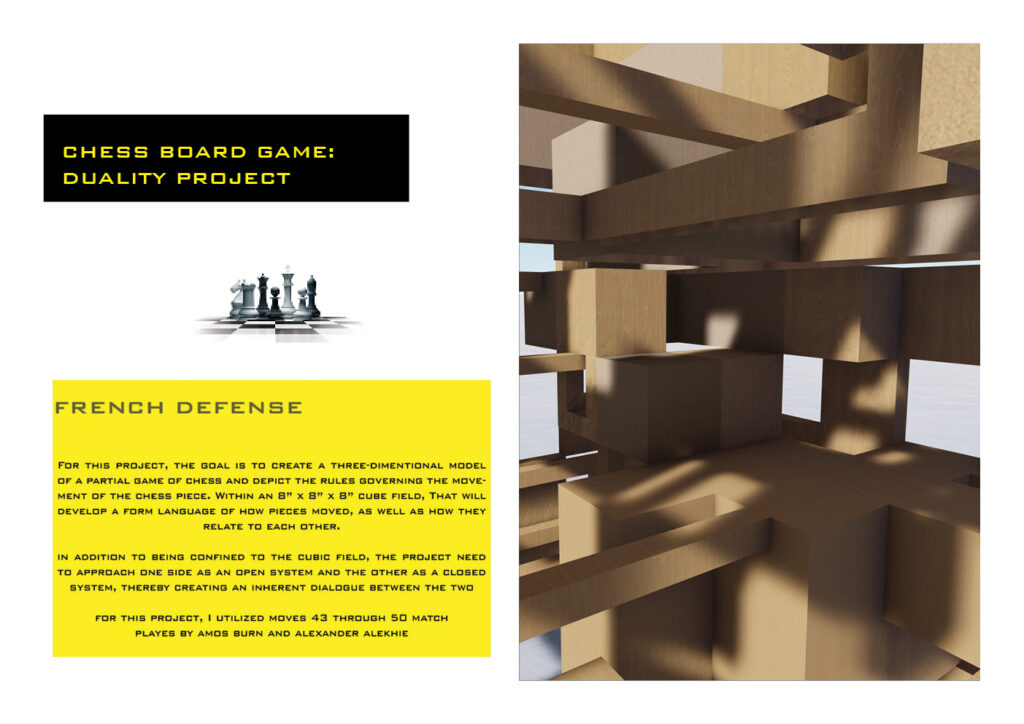
This Project Focuses on identifying a set of rules or an ordering system and utilizing those rules to inform the making of a drawing or object. This will also serve as an introduction to fundamental issues and activities of making a design form language. The goal of this project is to create a model and drawing showing in a three-dimensional of a partial game of chess. The object is to understand and “depict” the rules governing the movement of the chess piece.
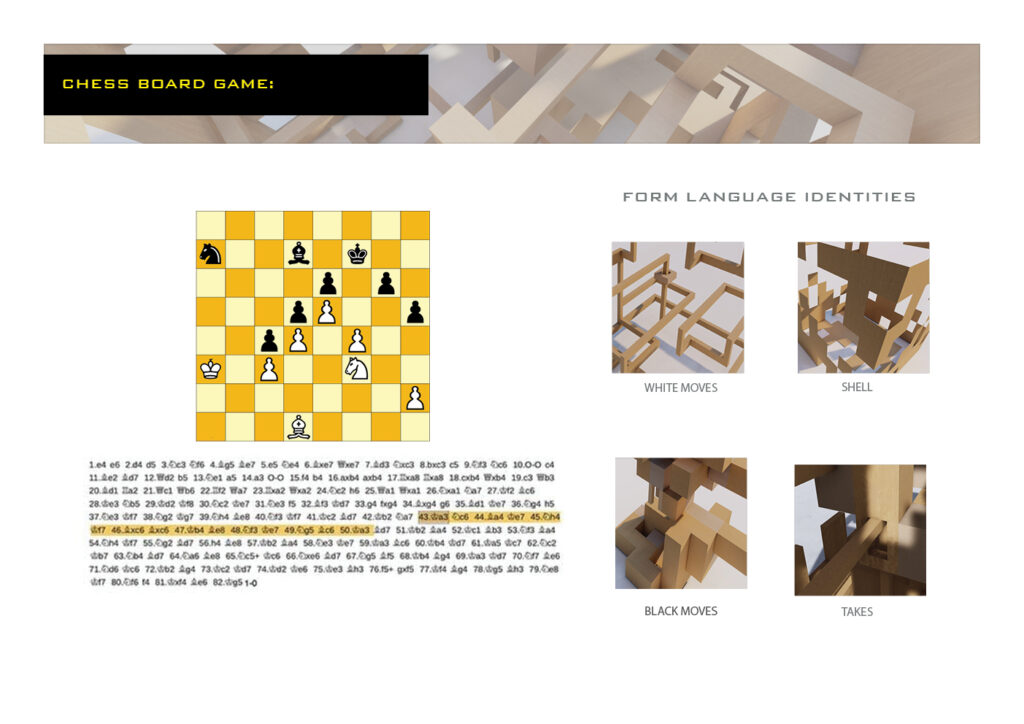
In the progression of the project, I selected a game of chess from a website (www.chessgame.com) and chose an interesting (active) series of 8 consecutive moves from the game which is from the 43rd up to the 50th moves that have been played by two French named Amos Burn and Alexander Alekhie. From there I decided to map the direction of the moves to its destination up to the final destination to see the sequence of the move of each opponent.
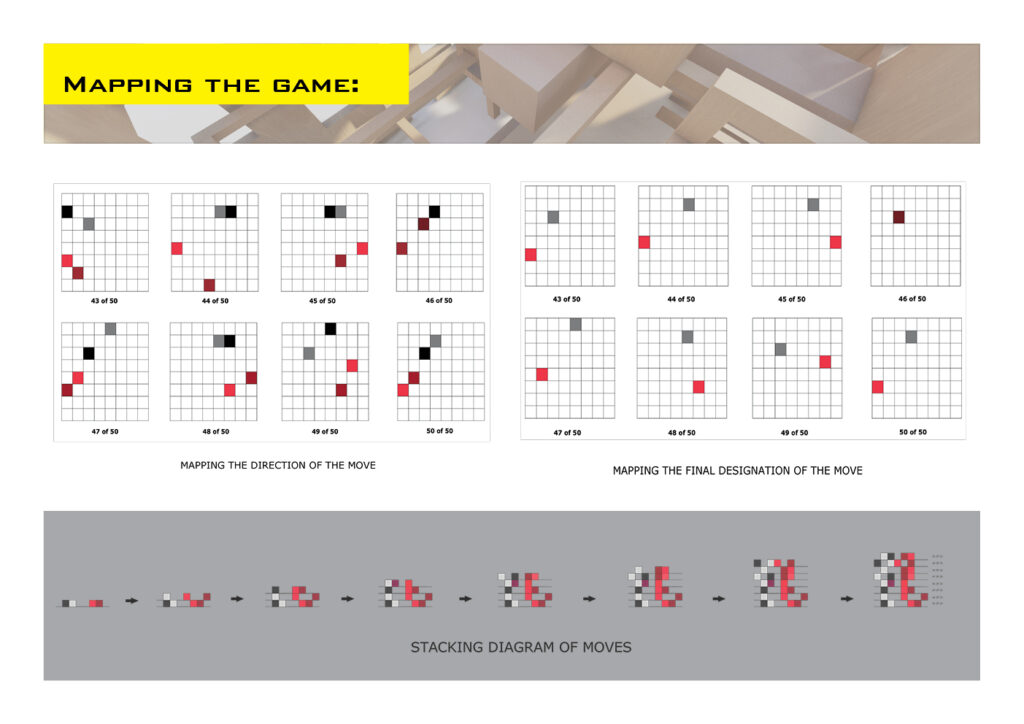
Using the mapping of the game I develop the 1st rule (Phase I) by separating the white (¼” x ¼” wood dowel) and black move (1” x 1” wood block) of each move and extending it to the 2-cardinal axis (x and y) and locate the possible movements and destination of the moves, to see the individuality of the two opposing moves.
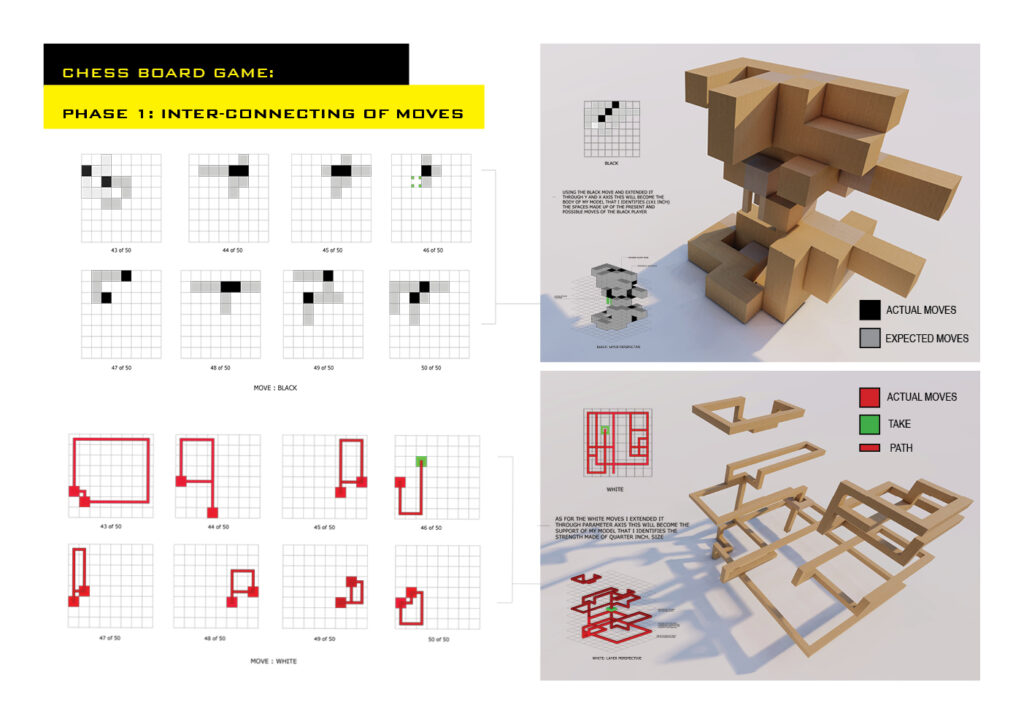
Secondly, I combine all the white and black moves in a vertical layer (Z axis) giving them a stocking effect to build a three-dimensional model, seeing the relationship of the moves altogether. By doing that I can create a solid space. The black moves as the body and the white moves to become the support and by combining the two moves I built a complete defense system.

n making the shell, I want to illustrate and emphasize the track of all the moving (positive) pieces of both opponents by combining them to see the totality of the game, making the game complete. After combining the positive (dynamic) and negative (static) movements. I made a rule to separate the negative movement and used that to form the shell of my game cube.
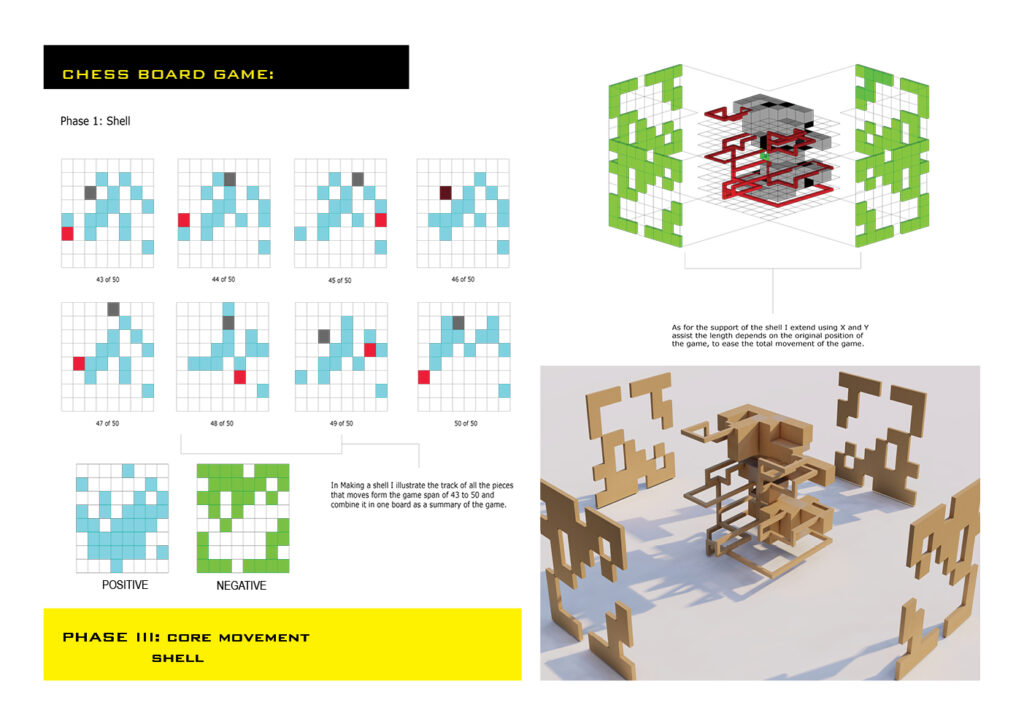
As for the ideal position of the shell, I created a final rule. Which, is the rotation of the players after finishing the first round of the game. I took that inspiration for the core (faces) of my game cube. Therefore, using all the guidelines I made I combined everything to form a design language. The body (Black moves) which I relate as a space, and support (white moves) relating to the foundation and building the of shell (Core) serve as the face and beauty of my game cube.
